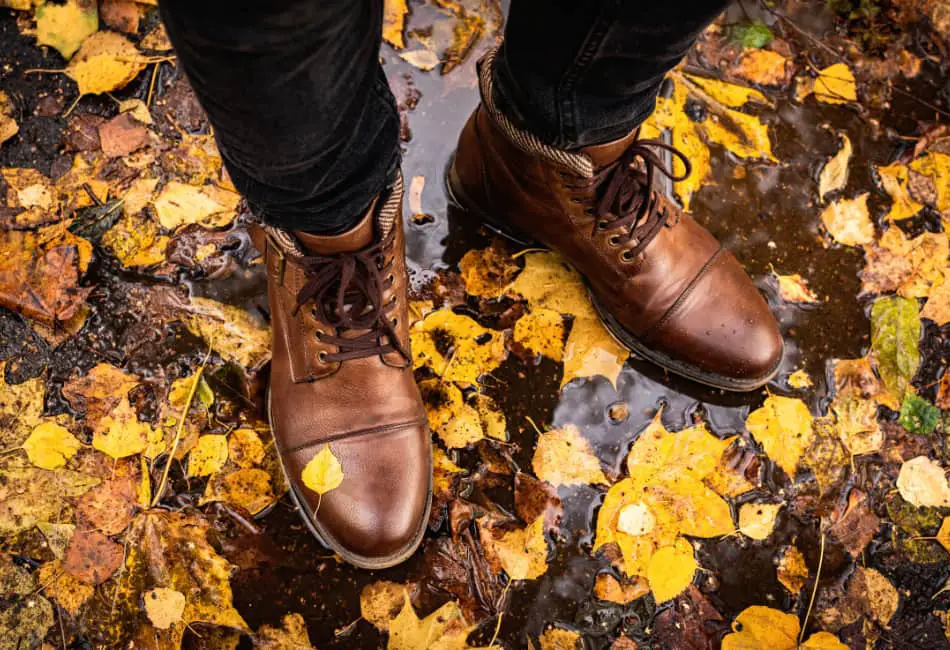If you’re like most people, you probably have a few pieces of faux leather furniture in your home. Faux leather is an affordable and popular alternative to real leather, but it’s important to take care of it properly if you want it to last.
So, does water ruin faux leather? The answer may surprise you! In this article, we’ll discuss the effects that water can have on faux leather and offer some tips for keeping your furniture looking its best.
If you came for a quick answer, water cannot ruin faux leather because faux leather is resistant to water damage. However, water can damage faux leather over time if the faux leather is exposed to consistent water exposure.
Why Is Faux Leather Resistant To Water?
As mentioned before, faux leather can resist water and this can be due to one main factor that is; faux leather is a non-porous material.
Faux leather is resistant to water because it is a non-porous material. This means that liquids and other materials cannot pass through the surface of faux leather, which can help protect it from water damage.
In addition to this, many faux leather items are treated with special chemicals that make them even more resistant to water damage.
How Water Can Damage Faux Leather Over Time
Faux leather is a material that’s made to look like genuine leather without actually being real animal skin. It has many of the same properties as real leather, but it costs less and doesn’t require animals to be killed in order for them to be manufactured.
This means that many people are able to afford and enjoy the benefits of owning furniture made from this material, but it’s important for them not to get their hopes up about its durability with water exposure.
This means that there are a few ways water can ruin your faux leather items. Below are a few common ways water can ruin faux leather over time.
1. Water Exposure Can Cause Mold And Mildew Growth
Faux leather is resistant to water damage, but it’s not invincible. Over time, consistent exposure will eventually cause some problems with the material.
One of these issues is mold and mildew growth due to moisture accumulation on the surface of the faux leather material.
Moisture is one of the perfect conditions for mold and mildew growth. This can happen when water gets onto the surface of your faux leather item, or even if it’s left in a damp room for too long.
Mold is unsightly to look at, but more importantly, it can cause some serious health problems for you and your family members.
2. Water Can Also Cause The Faux Leather To Smell Bad
Another problem that can occur if your faux leather is constantly exposed to water is that it will start to smell bad.
This happens because the faux leather material isn’t able to breathe, so any moisture that gets on it will get trapped and cause bacteria growth.
The bacteria that grow on faux leather will give off an unpleasant odor, which can be difficult to get rid of.
It is common knowledge that faux leather is an artificial material and it’s not the best smelling or natural smelling material – due to its chemical smell.
3. Consistent Water Exposure Can Cause Fading
When faux leather is consistently exposed to water, it can start to fade in color. This happens because the water will slowly wear away at the pigments that are used to color the faux leather material.
Over time, this can cause your furniture to lose its original color and even become discolored.
This may not be a huge issue as this will usually take a much longer time for it to happen. But still needs to be considered as a factor.
4. Water Can Cause Stains
Similarly, water can cause some stains on the surface of your faux leather if it’s left for too long.
If you leave water on the surface of your faux leather and you do not dry it properly, it is very easy for watermarks or water stains to appear on the surface of your faux leather.
This can be an issue if you want to keep your faux leather items looking pristine or spotless, so it’s best to make sure that any spills are cleaned up quickly.
How To Prevent Water Damage On Faux Leather
Now that you know a little bit about how water can damage your faux leather goods, it’s important to learn how to prevent it from happening.
There are a few simple ways that you can do this:
- Make sure to dry any spills or leaks as soon as possible.
- Do not leave your faux leather goods in direct sunlight after they have been washed.
- Keep your faux leather items in a room that has good ventilation so it doesn’t get too damp or humid.
- To avoid mold and mildew growth, use a dehumidifier in the room where your faux leather items are stored.
- If you live in an area that has high levels of humidity, it might be a good idea to purchase a waterproofing spray for your furniture.
- Use a soft cloth to clean your faux leather furniture on a regular basis, and make sure to dry it properly afterward.
- Makes sure to use a sealant or protector on your faux leather every few months or so to protect it from water damage.
- Last but not least, when using hard water, make sure to rinse your faux leather with distilled water instead of tap water.
Final Thoughts
To sum everything up, water can be a big threat to your faux leather furniture and should be avoided if possible.
While it is not the end of the world if your faux leather is exposed to water every once in a while, you should take some preventative steps to make sure that it doesn’t happen too often.
By following these simple tips, you can help to keep your faux leather looking and smelling great for years to come!


